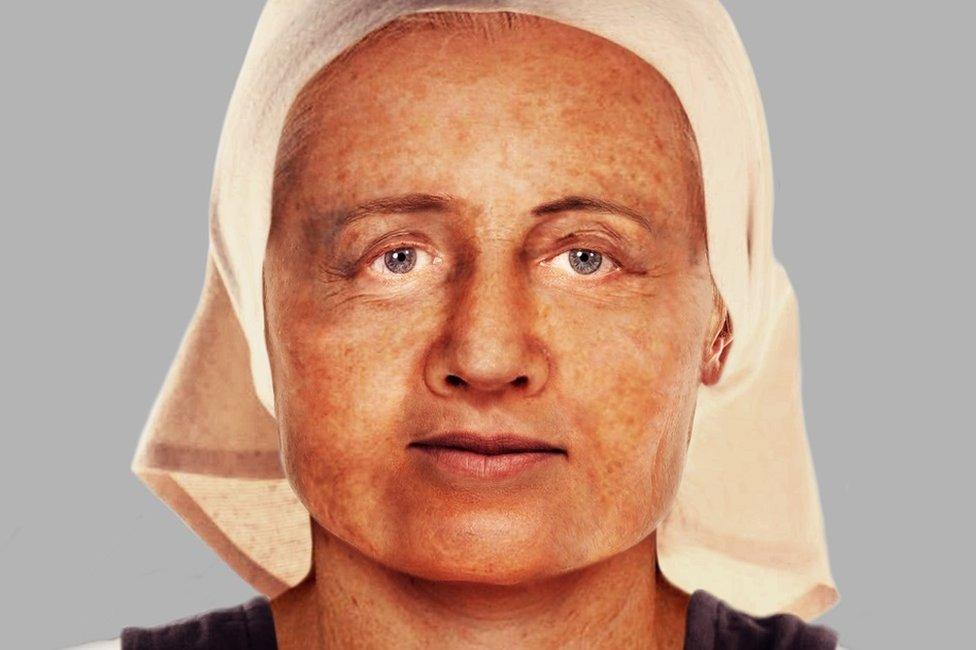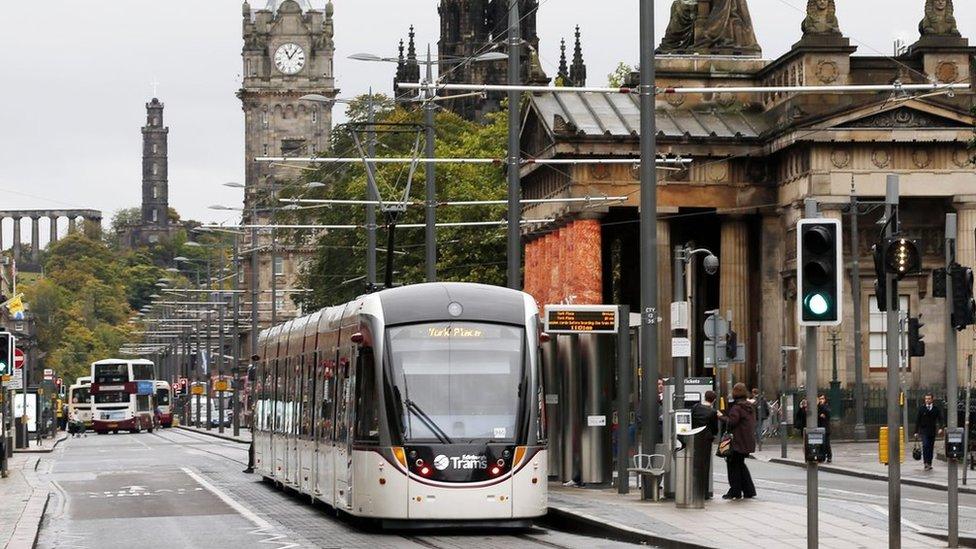Digital images made of Leith medieval graveyard skulls
- Published

University of Dundee students were involved in creating the images of a man and woman
Forensic artists have reconstructed the faces of people who lived in Edinburgh's Leith area up to 700 years ago.
Their remains were among more than 360 bodies uncovered during excavations of a medieval graveyard dating back to between the 14th and 17th centuries.
The dig was done as part of work to build almost three miles (5km) of tramway to connect Leith and Newhaven.
University of Dundee masters graduate students worked on the digital images.
Glasgow-based Guard Archaeology and City of Edinburgh Council's archaeologist were also involved.
Digital versions of skulls, discovered during excavations outside South Leith Parish Church, were made using 3D scanners.
The scans were the basis for the "lifelike representations" created of a man and woman who were both aged between 35 and 50.
Early forensic analysis suggests the woman may have suffered from nutritional deficiencies.

3D scans of skulls were used to help make the digital reconstructions
Council transport and environment convener Lesley Macinnes said the images offered a "fascinating insight into the lives of the people who lived in our city centuries ago".
She said: "The work being carried out now will not only shed light on the area's past but will help to conserve it for many years to come."
Council archaeologist John Lawson added: "Often, we as archaeologists just see the physical remains but the work undertaken by Dundee University's forensic artists helps put the flesh, so to speak, back on to these remains and by doing so I feel brings them closer to us today.''
Excavations were carried out in last summer outside South Leith Parish Church, Constitution Street, where previous investigations showed that in the medieval period the church's graveyard extended across the road with graves surviving beneath the current road surface.
A team of archaeologists, who were working to remove any human remains that could be affected by the tram works, exhumed more than 360 bodies dating from between 1300 and 1650.
They also found the apparent remnants of the original medieval graveyard wall.
The remains are now subject to examination and analysis to reveal information on the origins, health, diseases and diet of the people of medieval Leith.
- Published9 November 2020
